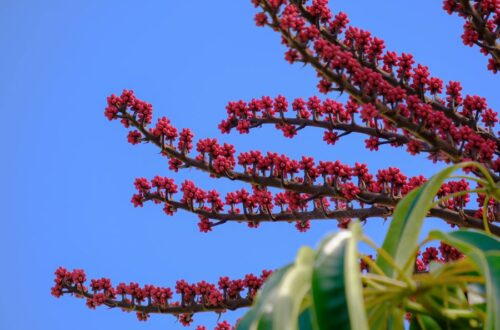Tree pruning stands as a fundamental practice in nurturing the health and visual appeal of your trees. Its multifaceted benefits encompass fostering robust growth, eliminating deceased or ailing branches, and refining overall tree architecture.
Primarily, grasping the significance of tree pruning lays the groundwork for ensuring the endurance and vigor of your arboreal companions. By facilitating the emergence of sturdy branches, enhancing air circulation, and mitigating the likelihood of maladies and pest invasions, pruning assumes a pivotal role in sustaining tree vitality.
Furthermore, the recurrent application of pruning techniques not only elevates the scenic allure of your surroundings but also cultivates harmonious growth patterns in trees. Beyond mere aesthetic enhancement, adequately pruned trees furnish a safer milieu by curtailing the potential hazards posed by falling branches.
Tree Pruning Techniques: How to Safely and Effectively Prune Your Trees
When it comes to tree pruning, employing the right techniques is crucial for achieving optimal results while minimizing potential damage to the tree. Here are some key techniques to keep in mind:
Firstly, start by identifying the branches that need pruning. Focus on removing dead, damaged, or crossing branches, as well as those that pose a safety hazard.
Selecting the appropriate tools is paramount when undertaking tree pruning endeavors. Opt for sharp and well-maintained pruning shears or saws, ensuring they are sanitized to avert the potential transmission of diseases among trees.
When executing cuts, adhere to the principle of pruning outside the branch collar—a discernible bulge where the branch intersects with the trunk. This strategic approach minimizes the risk of detrimental effects on tree health. Avoiding the retention of stubs is imperative, as they not only serve as magnets for pests but also impede the natural healing process of the tree.
When to Prune Trees: A Seasonal Guide for Optimal Results
Determining the right time to prune your trees is critical to ensure their health and vigor. Different seasons offer unique advantages for specific pruning objectives, allowing you to maximize the benefits of your efforts.
In spring, capitalize on the season’s vitality to promote new growth and shape young trees. This is an opportune time to eliminate dead or damaged branches and thin out dense areas to facilitate improved sunlight penetration and air circulation.
During the warmer summer months, exercise restraint in pruning activities, focusing primarily on essential maintenance tasks. Remove any diseased or insect-infested branches to prevent the spread of ailments. However, avoid extensive pruning during periods of intense heat to mitigate stress and protect against sunburn damage.
As autumn sets in, take advantage of the deciduous trees’ transition into dormancy. This season presents an ideal opportunity for structural pruning to address weak or overcrowded branches. By conducting pruning tasks in fall, you prepare the tree for winter while minimizing stress and promoting overall health.
Winter presents an opportune period for pruning dormant trees, offering improved visibility of the tree’s structure and easing cleanup efforts. Leverage the tree’s dormant state for corrective pruning and branch removal, ensuring its well-being and structural integrity. This practice mitigates safety hazards and fosters the tree’s health.
In summary, honing the skill of tree pruning is paramount for preserving the health, safety, and aesthetic appeal of your trees. By understanding pruning’s significance and using proper techniques, you pave the path for tree flourishing. Adherence to a seasonal regimen ensures long-term health and vitality.


